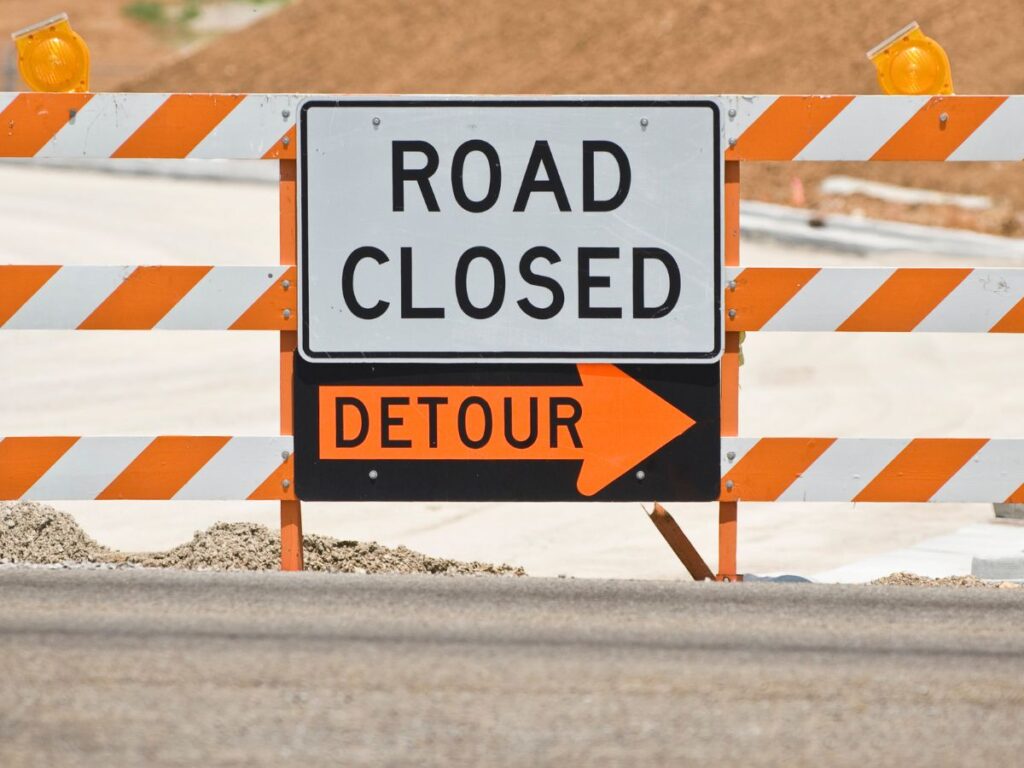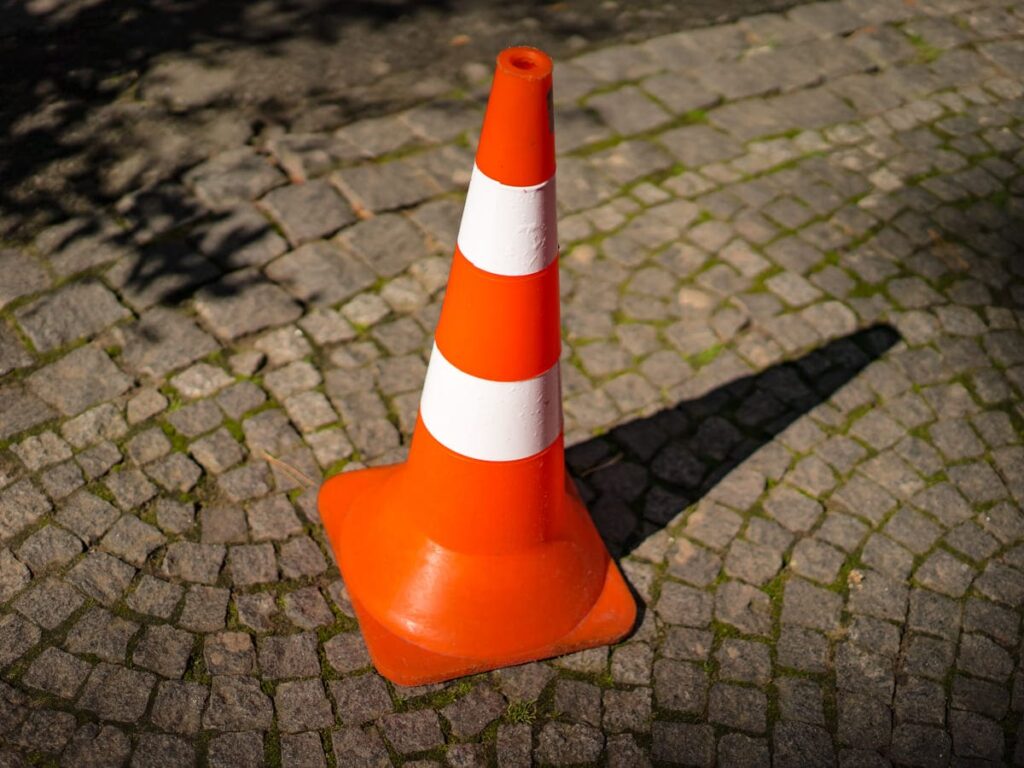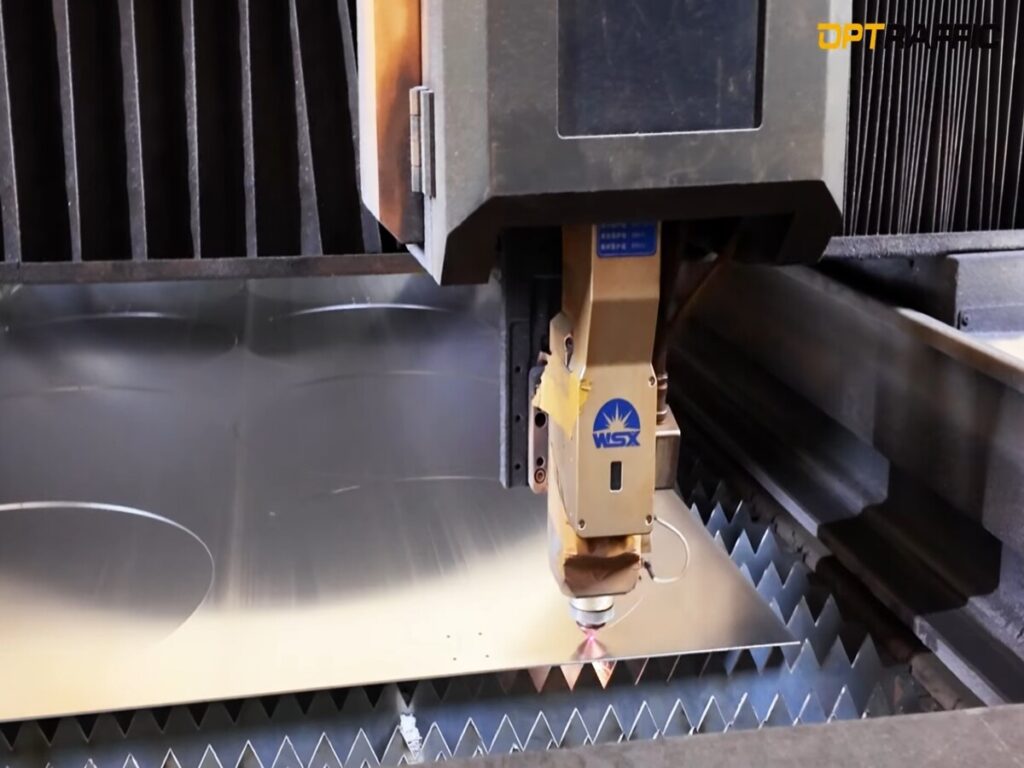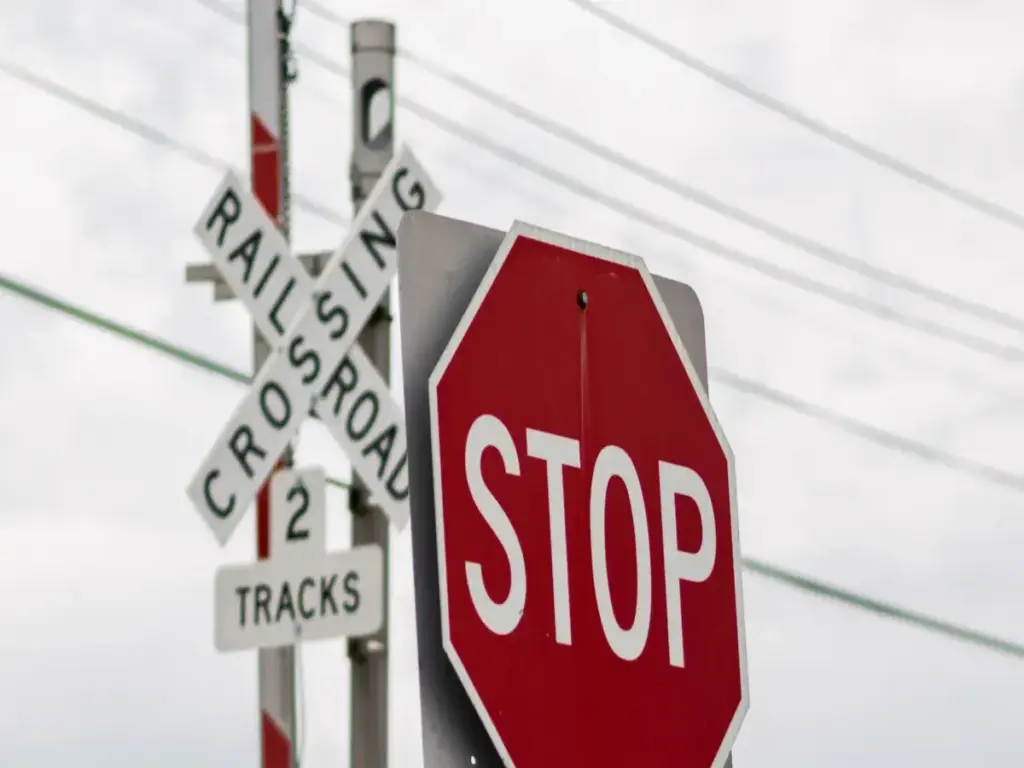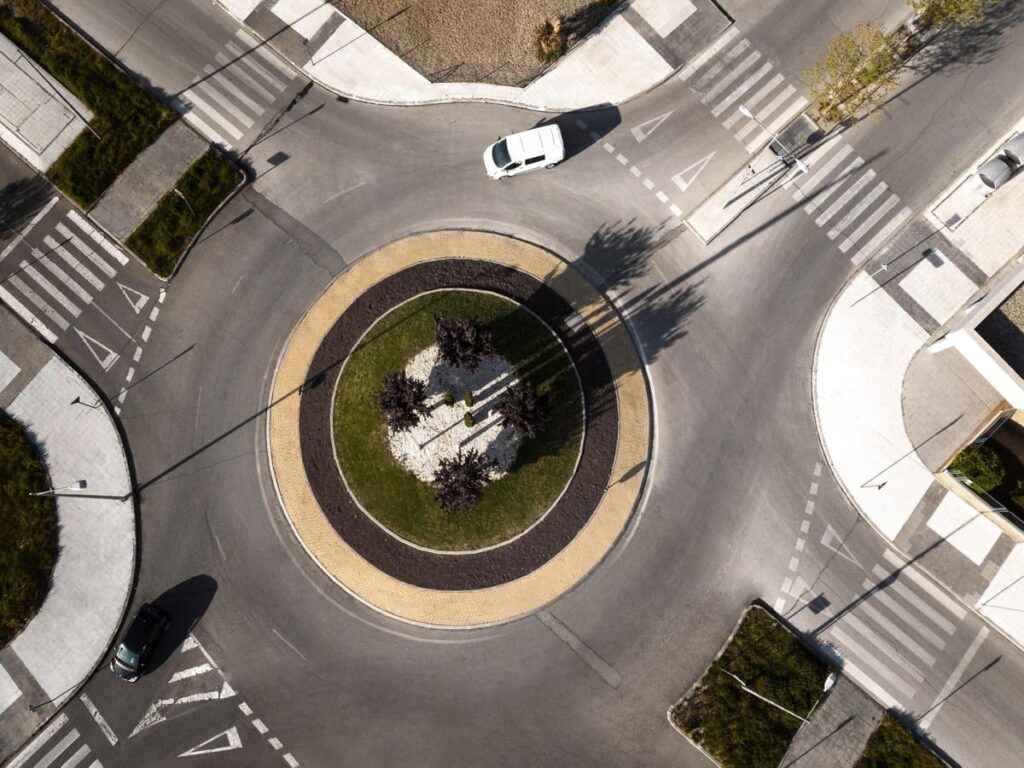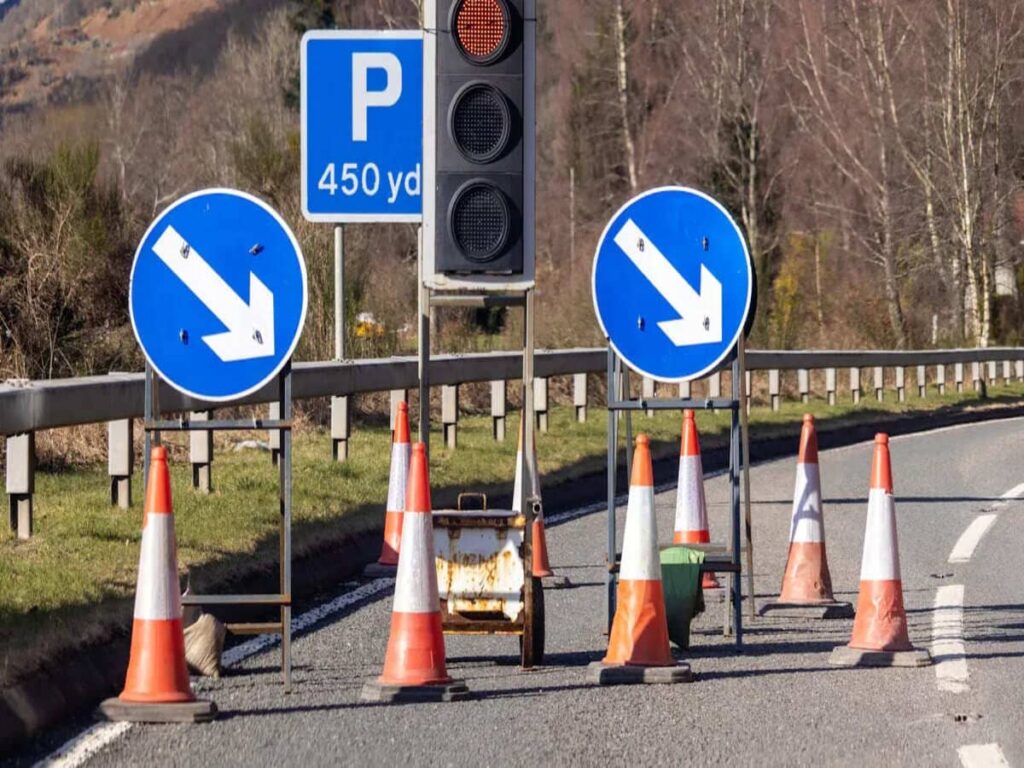
反射的なトラフィックコーン play a vital role in ensuring safety during nighttime use. これらの反射コーンは再帰反射素材を使用し、暗い場所での視認性を向上させます。, ドライバーが安全に道路を移動できるように支援する. その有効性はいくつかの要因によって決まります, 素材の良さも含めて, 環境条件, そして定期的なメンテナンス. 適切に設計された反射コーンは、厳しい天候に耐え、反射特性を維持できます。, 交通安全に欠かせないものとなっています.
How Reflective Traffic Cones Work at Night
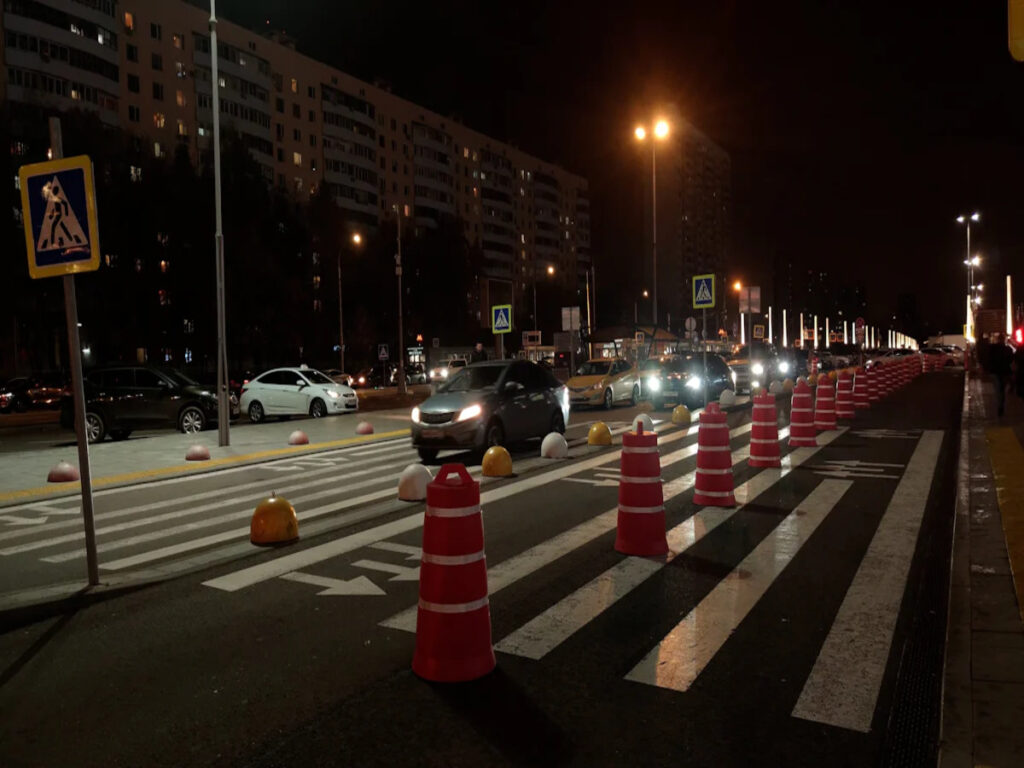
The Science of Reflectivity
Retroreflective materials and their interaction with light
反射技術を後押し plays a crucial role in making reflective traffic cones visible at night. This optical phenomenon directs light back to its source, ensuring objects remain noticeable even in low-light conditions. 反射材料を後押しします, のような microscopic glass beads or microprisms, are embedded in reflective traffic cones. These materials reflect light from vehicle headlights directly back to the driver, creating a bright and clear visual cue. The millions of tiny glass beads within the material enhance this effect, making the reflective traffic cones shine brightly when illuminated. This technology ensures that drivers can easily spot reflective traffic cones, 厳しい夜間環境でも.
車のヘッドライトがコーンの視認性を高める仕組み
車両のヘッドライトは、再帰反射材が効果的に機能するために不可欠な光源を提供します。. ヘッドライトがトラフィックコーンを照らすとき, 再帰反射面が光をドライバーに向かって反射します。. このインタラクションにより視認性が大幅に向上します, ドライバーが安全な距離から反射コーンを識別できるようにします. 研究によると、再帰反射率の増加により、ドライバーが交通パターンの変化により迅速に反応できるようになり、衝突リスクが軽減されることが示されています。. この機能は、工事区域や迂回路において特に重要です。, 安全のために明確なガイダンスが重要な場合.
反射トラフィックコーンの設計上の特徴
反射バンドの配置とサイズ
反射コーン上の反射バンドの配置とサイズは、視認性を最大化するために慎重に設計されています。. 高品質の反射バンドまたは首輪, 高度な再帰反射シートで作られています, 円錐上に戦略的に配置されています. これらのバンドにより、コーンが光を効果的に捉えて反射することが保証されます。, 暗い環境でも. 例えば, 反射シート 薄暗い道路でも反射コーンを目立たせることができます, ドライバーが遠くからでも気づくのを助ける. この設計機能によりタイムリーな反応が保証されます, 事故の可能性を減らす.
円錐の形状とその視認性への影響
トラフィック コーンの形状も視認性に影響します. 円錐形のデザインにより安定性が確保され、表面全体で光が均一に反射されます。. この形状により、コーンがさまざまな角度から見ても目立つようになります。, ドライバーが道路上の位置に関係なく視認できるようにする. さらに, コーンの 高さと幅 その有効性に貢献する, 多様な用途に適したものにする, 高速道路から市街地まで.
反射トラフィックコーンの性能に影響を与える要因
材料の品質と製造基準
高効率反射材とその耐久性
反射トラフィック コーンに使用される素材は、そのパフォーマンスに大きく影響します。. メーカーは一般的に 3 つのタイプを使用します。 反射シート: エンジニアリンググレード, 高強度プリズム, ダイヤモンドグレード.
| 材料タイプ | 説明 |
|---|---|
| エンジニアリンググレードシート | プラスチックフィルムに埋め込まれたガラスビーズを使用し、光を反射します。, 中程度の交通量のエリアに適しています. |
| 高強度のプリズムシート | 優れた反射率を実現するマイクロプリズムを搭載, 工事現場や交通量の多いエリアに最適. |
| ダイヤモンドグレードシート | マイクロプリズムのダイヤモンドパターンが含まれています, 高速道路上の重要な安全アプリケーションに並外れた明るさを提供します. |
ダイヤモンドグレードのシートにより最高レベルの明るさを実現, 高速道路や交通量の多いエリアに最適です。. 高輝度プリズムシートは、建設ゾーンに耐久性と優れた反射率を提供します. エンジニアリンググレードのシート, 反射が少ないながらも, 交通量の少ないエリアでもうまく機能します. 素材の選択は、コーンの磨耗に耐え、長期にわたる視認性を維持する能力に影響します。.
OptSigns これらの高品質シートオプションを備えた反射トラフィックコーンを提供します, 交通管理ソリューションが目立つようになり、あらゆる状況でも効果を維持できるようにする.
MUTCD 準拠とパフォーマンスにおけるその役割
The 均一な交通制御装置のマニュアル (mutcd) トラフィック コーンの設計と反射率の基準を設定する. コンプライアンスにより、反射性ロードコーンが視認性と耐久性に関する安全要件を満たしていることが保証されます。. これらの規格に準拠したコーンは、さまざまな条件下で確実に機能します。, ドライバーと作業員のリスクを軽減する.
環境条件
雨の影響, 霧, 反射率上の雪
雨などの気象条件, 霧, 雪が降ると反射トラフィックコーンの効果が低下する可能性があります. 水滴は光を散らします, 再帰反射効果の減少. 霧が拡散光環境を作り出す, 反射性のロードコーンを見えにくくする. 雪がコーンを覆う可能性があります, 反射帯を覆い隠す.
汚れの影響, 汚れ, および道路状況
反射面に汚れが蓄積する, 光を反射する能力を低下させる. 濡れた道路や泥だらけの道路では、破片がコーンに飛び散る可能性があります, さらに視認性が低下する. 定期的な清掃は、厳しい環境でもパフォーマンスを維持するのに役立ちます.
照明条件
車のヘッドライトや街灯への依存
反射トラフィック コーンは外部光源に依存します, 車のヘッドライトや街灯など, 機能する. ヘッドライトは直接照明を提供します, 再帰反射材料を活性化する. 街路灯により都市部の視認性が向上, 反射性ロードコーンを補完する’ 反射特性.
低光源または拡散光源に関する課題
低光源または拡散光源, 霧の中での薄暗いヘッドライトや散乱光など, コーンを減らす’ 可視性. これらの条件により、再帰反射材料が光を効果的に反射することが難しくなります。, 高品質の素材と適切な配置の必要性を強調.
配置と角度
視認性を最大限に高める最適な配置
反射トラフィックコーンを適切に配置することで、ドライバーを誘導し、安全性を高める効果が保証されます。. 最大限の視認性を実現するには, 反射コーンは他の物体によって妨げられないようにする必要があります, 障壁や瓦礫など. クリアな視界により、ドライバーは遠くからでも反射性のロードコーンに気づくことができます, 彼らに反応するのに十分な時間を与える.
コーン間の間隔は効果に重要な役割を果たします. 高速道路で, 車両が高速で走行する場所, 明確な誘導を提供するために、反射性ロードコーンを互いに近づけて配置する必要があります。. 対照的に, 低速領域ではより広い間隔が必要, ドライバーがコースを調整する時間が増えるため. さらに, 反射コーンのサイズと高さは環境に一致する必要があります. 大型の反射ロードコーン, 測定する 28 インチ以上, 高速道路に最適です, 一方、反射性ロードコーンは小さい, その周り 18 インチ, 低速ゾーンでもうまく機能する. 反射機能により視認性がさらに向上, 特に夜間または低照度の状態で.
これらのベストプラクティスに従うことで、, 反射安全コーンはドライバーを効果的に誘導し、さまざまな道路シナリオでのリスクを軽減します。.
円錐の角度が光の反射に与える影響
トラフィック コーンの配置角度は、反射性能に大きく影響します。. 再帰反射素材は、光が直接当たるときに最も効果を発揮します。. 円錐が直立位置から傾きすぎる場合, the reflected light may not return to the driver’s line of sight. This misalignment reduces the cone’s visibility, 特に夜に.
To maintain optimal reflectivity, reflective safety cones should stand upright on flat surfaces. Uneven terrain or improper placement can cause reflective safety cones to lean, diminishing their effectiveness. Regular inspections ensure reflective safety cones remain properly aligned, maximizing their ability to reflect light back toward drivers. This attention to detail enhances safety and ensures reflective safety cones perform reliably in all conditions.
Benefits of Reflective Traffic Cones for Nighttime Safety
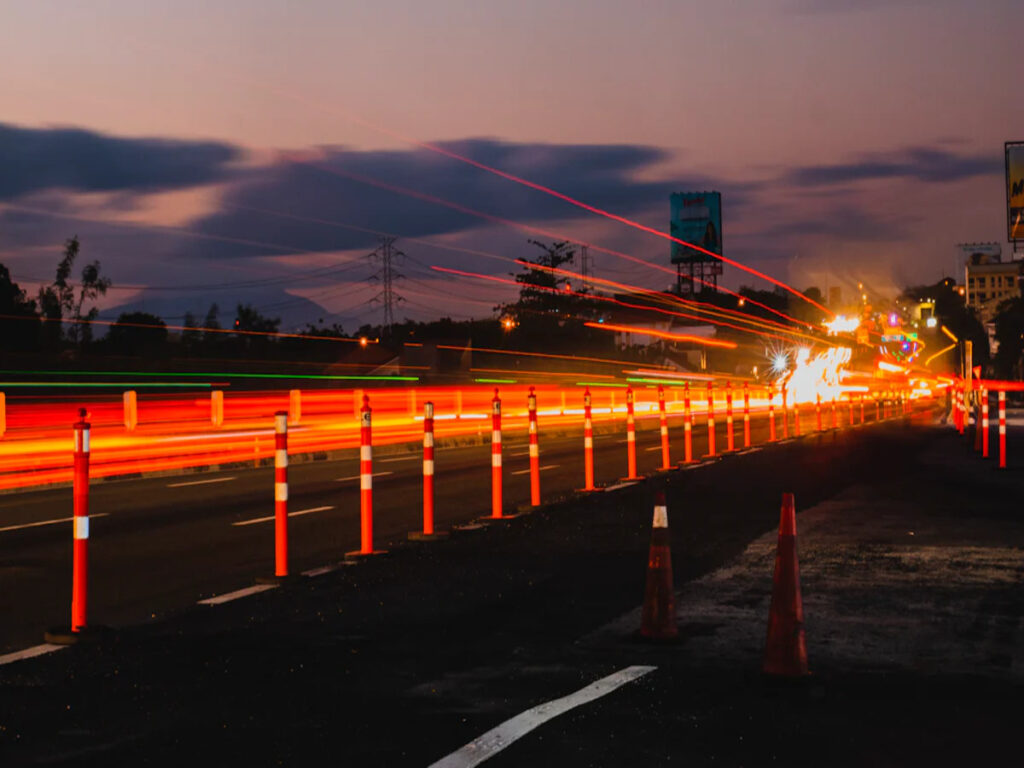
事故防止
Guiding drivers in construction zones and detours
Reflective traffic cones play a critical role in guiding drivers through construction zones and detours at night. 反射シートは車両のヘッドライトからの光をドライバーに反射させて視認性を高めます。. この機能により、反射セーフティコーンが暗い場所でも目立ち続けることが保証されます。. ドライバーは交通の流れの変化を予測できる, 事故の可能性を減らす. これらのコーンは、一時的な交通管理セットアップに特に効果的です。, 交通安全を維持するために明確な指導が不可欠な場所.
薄暗い場所でのリスクを軽減する
照明が不十分な場所では, 田舎道や薄暗い都会の通りなど, 反射トラフィックコーンはリスクを大幅に軽減します.
- 反射安全コーンの反射ストリップにより、ヘッドライトで照らされたときに非常に視認性が高くなります。.
- この可視性は、ドライバーが危険や道路状況の変化を識別するのに役立ちます, 彼らが迅速に反応できるようにする.
- 工事区域や一時的な交通規制区域での使用により、夜間作業時の車両の安全なナビゲーションが保証されます。.
労働者と歩行者の安全
夜間作業中の道路作業員の保護
反射トラフィックコーンは、作業ゾーンと交通の間に目に見える障壁を作り、道路作業員の安全性を高めます。. 研究によると、コーンとフレアを組み合わせると、夜間の車線占有率と車両速度が統計的に有意に低下することが示されています。.
| 測定 | フレアアローン | コーンだけ | フレア + コーン |
|---|---|---|---|
| レーン 1 占有率 (夜) | 大幅な減少 | 微減 (重要ではない) | 大幅な減少 (統計的に信頼できる) |
| レーン 1 スピード (夜) | 減少 (統計的に信頼できる) | 微減 (重要ではない) | n/a |
| 横方向の距離 (夜) | より長い距離 | 微減 (重要ではない) | n/a |
このデータは、夜間の道路作業中に作業員を保護するための反射コーンの重要性を浮き彫りにしています。.
緊急時の歩行者の視認性向上
反射トラフィックコーンは緊急時の歩行者の安全性も向上します. 反射シートにより、暗い場所でも視認性が確保されます。, 暗い環境でも目立つようにする. 緊急対応者は、危険を知らせるためにこれらの反射安全コーンをよく使用します。, 歩行者を危険ゾーンから安全に遠ざけるように誘導する.
多用途性と適応性
道路建設への応用, イベント, そして緊急事態
反射トラフィックコーンは、さまざまな夜間シナリオで優れた多用途性を発揮します。.
- 道路の建設やメンテナンス作業中の視認性を高めます。.
- イベント主催者は、駐車場の管理や交通の流れの調整にこれらを使用します。.
- 緊急対応者はこれを利用して危険エリアにマークを付け、車両や歩行者を誘導します。.
これらの反射安全コーンは、さまざまな状況で安全を確保します。, 交通管理に欠かせないものとなっています.
さまざまな天候や環境条件での使用
Reflective traffic cones perform reliably in challenging weather conditions.
- They enhance visibility during heavy rain, 霧, または雪, marking hazards effectively.
- Cones equipped with LED lights further improve visibility in extreme conditions, such as snow-covered roads or icy patches.
- Their durable materials ensure consistent performance, even in adverse environments.
This adaptability makes them a vital tool for maintaining traffic safety in all weather conditions.
Limitations and Challenges of Reflective Traffic Cones
摩耗と裂け目
Degradation of reflective materials over time
Reflective materials on traffic cones lose their effectiveness as they age. Exposure to sunlight, 雨, and other environmental factors causes the retroreflective surface to fade. This degradation reduces the cone’s ability to reflect light back to drivers, 特に夜に. 時間とともに, 反射バンドも剥がれたり亀裂が入ったりする可能性があります, 彼らの可視性はさらに低下します. 定期的な検査により、材料が摩耗したコーンを特定することができます, 安全を維持するために速やかに交換することを保証する.
頻繁な取り扱いや過酷な条件による損傷
セットアップや取り外しの際に頻繁に取り扱うと、物理的な損傷につながる可能性があります. 傷, へこみ, 反射面の破れにより、光を効果的に反射する能力が低下します。. 過酷な条件, 交通量の多い場所や工事現場など, コーンを車両や機械からの衝撃にさらす. これらの衝撃により、コーンが変形したり、反射バンドが損傷したりする可能性があります。. 耐久性のある素材と適切な取り扱い技術を使用することで、磨耗を最小限に抑えます。, コーンの寿命を延ばす.
長期にわたるパフォーマンスと視認性を確保するには, OPTsigns 反射ロードコーン are designed with high-quality materials that withstand tough conditions. Featuring sturdy construction and reflective bands that maintain their brightness, OPTsigns 反射ロードコーン are built for maximum durability, making them ideal for a variety of environments, from busy highways to construction sites.
環境への影響
Reduced visibility in extreme weather conditions
Extreme weather conditions, 大雨などの, 霧, または雪, significantly impact the visibility of traffic cones. Rainwater scatters light, reducing the retroreflective effect. 霧が拡散光環境を作り出す, making it harder for drivers to see the reflective road cones. Snow can cover the reflective bands, rendering them ineffective. In such conditions, additional lighting or illuminated cones may be necessary to ensure visibility.
Dirt and debris accumulation affecting reflectivity
ダート, 汚れ, and road debris accumulate on the reflective surface over time. This buildup blocks light from reaching the retroreflective material, reducing its effectiveness. Wet or muddy roads exacerbate this issue, as splashes from passing vehicles can coat the cones in grime. Regular cleaning of traffic cones ensures their reflective properties remain intact, 挑戦的な環境でも.
メンテナンス要件
Importance of regular cleaning and inspection
Routine cleaning and inspection are essential for maintaining the performance of reflective traffic cones. Cleaning removes dirt and grime that obstruct the reflective surface. Inspections identify damage, such as cracks or peeling reflective bands, that compromise visibility. A consistent maintenance schedule ensures reflective road cones remain effective in guiding drivers and enhancing safety.
Replacement of damaged or worn cones
Damaged or worn cones must be replaced to maintain optimal performance. Cones with faded reflective bands or physical deformities fail to provide adequate visibility. Replacing these cones ensures they continue to meet safety standards. Investing in high-quality cones reduces the frequency of replacements, making traffic management more efficient and cost-effective.
Improving the Nighttime Performance of Reflective Traffic Cones
Material and Design Innovations
Use of eco-friendly and abrasion-resistant materials
Eco-friendly materials are transforming the durability and sustainability of traffic cones. Manufacturers now use recycled plastics and biodegradable substances to reduce waste and resource consumption. These materials not only minimize environmental impact but also enhance the traffic cones’ ability to withstand harsh weather and heavy usage. モジュラーデザイン further improve sustainability by allowing damaged parts to be replaced instead of discarding the entire cone. さらに, energy-efficient manufacturing processes lower carbon emissions, contributing to a smaller environmental footprint. These innovations ensure that traffic cones remain both durable and environmentally responsible.
Advancements in retroreflective technology
Recent advancements in retroreflective technology have significantly improved the visibility of traffic cones. Modern designs incorporate microprisms and advanced coatings, which enhance reflectivity and ensure better performance in low-light conditions.
Best Practices for Maintenance
Regular cleaning to remove dirt and grime
Regular cleaning is essential for maintaining the reflective properties of traffic cones. Dirt and grime can accumulate on the reflective bands, reducing their ability to reflect light effectively. Cleaning with mild soap and water removes these obstructions, ensuring the reflective cones remain visible at night. This simple practice extends the lifespan of the reflective cones and enhances their performance in all conditions.
Timely replacement of worn-out cones
Replacing worn-out cones is crucial for maintaining safety standards. Cones with faded reflective bands or physical damage fail to provide adequate visibility. Regular inspections help identify cones that need replacement. Investing in high-quality cones reduces the frequency of replacements, ensuring consistent performance and cost efficiency.
反射的なトラフィックコーン play a vital role in nighttime safety by improving visibility and reducing risks for road users. Their performance depends on material quality, 環境要因, and consistent maintenance. 高品質の素材と革新的なデザインにより、耐久性と反射率が向上します。. 定期的な清掃と適時の交換により、最適なパフォーマンスが保証されます. 配置と間隔に関するベスト プラクティスに従うと、その効果がさらに最大化されます。. これらの対策により、ドライバーを保護するために反射トラフィックコーンが不可欠となっています, 労働者, 暗い場所での歩行者と.

